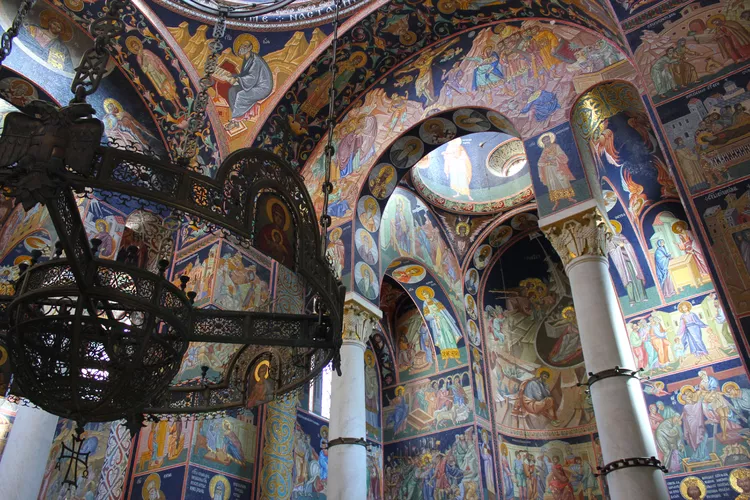1. Summary
Like many Orthodox temples, St. George’s Church at Oplenac, just outside of Topala, Serbia, appears unassuming on the exterior. Although its white marble facade topped with copper domes stands out from the surrounding forest landscape, there’s no indication of the stunning artistry that lies inside, which features over 40 million tiles of jewel-toned Murano glass mosaic work. These beautiful mosaics span nearly every corner of the church’s nave and underground crypt.
2. History
St. George’s Church was founded by King Peter Karađorđević I as a royal mausoleum for his family, the second dynastic family in Serbia. They ruled until Serbia became part of socialist Yugoslavia in 1945. The location for the church was selected in 1903, with the first stone laid in 1907. However, construction faced interruptions during both the Balkan Wars and World War I. King Peter passed away in 1921, prior to witnessing the completion of his vision. His successor, Alexander I, took over the project and completed it by 1930.
Today, the church’s ground level houses the remains of two royals: the founder of the Karađorđević dynasty, Karađorđe, and King Peter I, its creator. In the crypt, six generations of the Karađorđević family rest, with ample space for additional family members.
3. Design
The cross-shaped St. George’s Church showcases a stunning example of Serbian-Byzantine architecture, characterized by four small domes surrounding a larger central dome. The building’s stark white marble exterior was sourced from the nearby Venčac Mountain, but upon entering, visitors are met with an extraordinary interior that contrasts dramatically with the outside.
The entire interior of St. George’s Church is adorned with exquisite Murano glass mosaics, totaling over 40 million tiles in approximately 15,000 unique colors. Some of these tiles are even plated with 14 and 20 karat gold. The scenes depicted in the tile work are carefully replicated from 60 monasteries and churches throughout Serbia. A remarkable three-ton bronze chandelier hangs beneath the central dome, crafted from melted weaponry after World War I.
4. What Else to See at Oplenac
King Peter’s House: At the fore of the church sits a small house from which King Peter I oversaw the construction for five years. This house now serves as a museum, showcasing exhibits related to the Karađorđević dynasty, including family portraits and a unique rendition of the Last Supper made of mother of pearl, a treasured heirloom.
The King’s Winery: Just behind the church, visitors can enjoy sweeping vineyard views. Down the hill lies the King’s Winery, established by King Peter’s successor, King Alexander. Nowadays, the winery operates more as a museum, with two underground cellars that still house 99 original oak barrels. Some of these barrels were even gifted to the King at his wedding from neighboring countries.
5. How to Visit
The Oplenac complex is located just outside the town of Topola, approximately fifty miles south of Belgrade—about a 1.5-hour drive by car. The charming town of Topola features street-side dining options and is in close proximity to many wineries in Serbia’s Šumadija region.
Entrance Fees: A ticket costing 400 Serbian Dinar (roughly USD $4.00) purchased at St. George’s Church also grants access to King Peter’s house and the King’s Winery.





